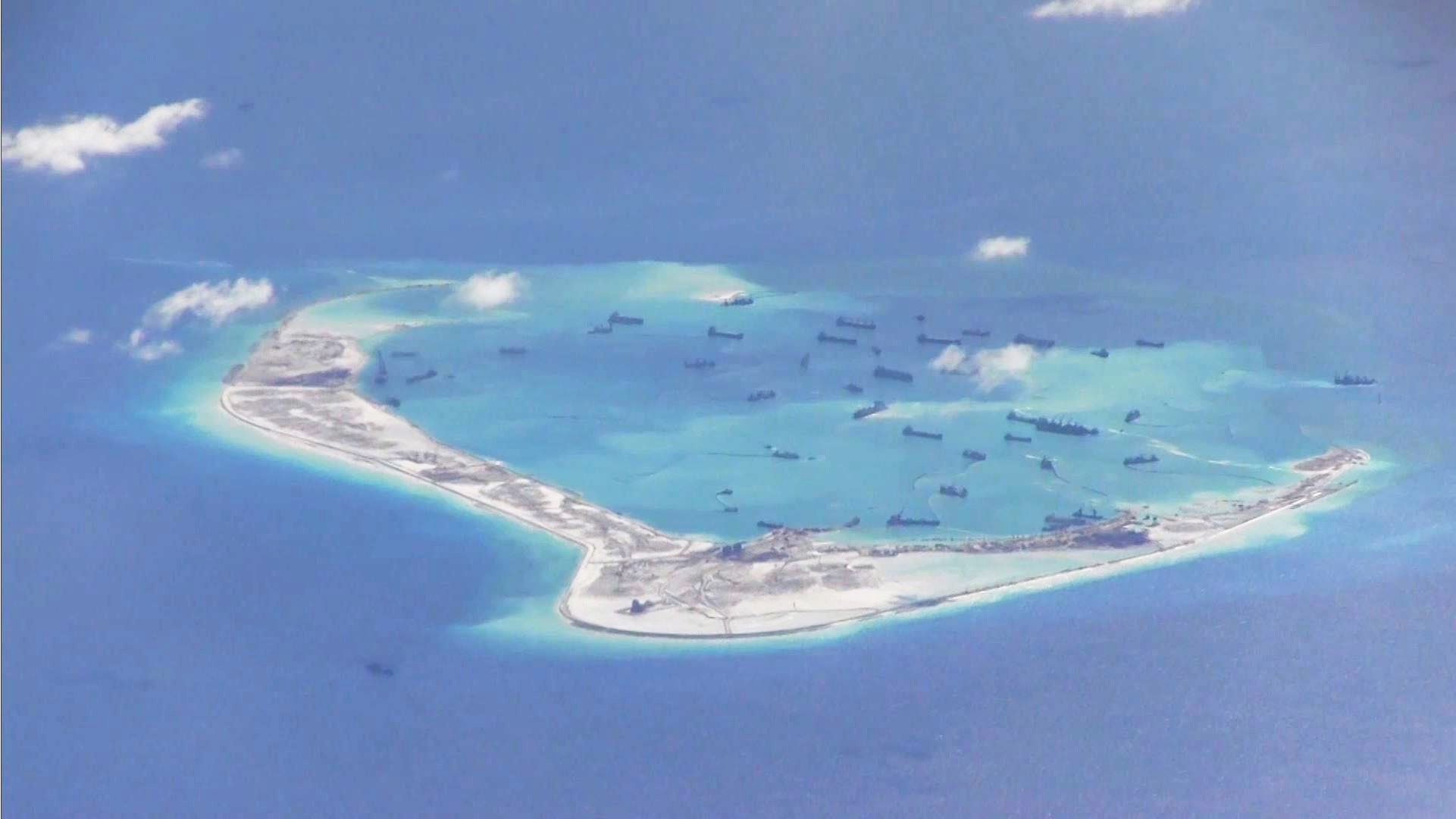
photo courtesy of U.S. Navy Youtube Chanel
500 miles from the Chinese mainland, Chinese dredgers have nearly completed a string of man-made islands in the South China Sea. The islands, added to the Spratly Island archipelago, have rapidly expanded since March 2014, when they were first photographed by a US plane in March. Now decked out with Chinese infrastructure, the islands include a full-size airstrip, several military bases and the newly-minted Chinese Sansha City, which oversees China’s territories in the region.
Control of the South China Sea is a widely disputed topic; China, the Philippines, Malaysia, Vietnam and Taiwan all claim overlapping territories. While the United Nations maritime territorial expansion limits a country’s territory to 12 nautical miles from its coastline, China claims a boundary that skims the coast of Malaysia, the Philippines, and Vietnam, encircling the entirety of the South China Sea. The Spratly Island region is geographically closest to the Philippines and Malaysia.
In response to the Chinese territorial claims, the United States has sent several United States Navy ships through the South China Sea, asserting the right of shipping to move through the area undeterred. The ships have often been trailed by Chinese Ships, and the Chinese ambassador to the United States, Cui Tiankai, described the United States operation to CNN News as a “very serious provocation, politically and militarily.”
The new islands will strengthen Chinese presence in the area, which is believed to host a wealth of natural resources, including oil. It is unclear at this moment exactly how many natural resources the area boasts, as it is largely unexplored.
However, the area is heavily used today. Commercial fishing in the sparsely populated Spratly Island region is extremely popular. Additionally, more than five trillion dollars of trade travels through the Spratly Island region every year; millions of products from Asia move through the area to reach the Americas. In response to China’s encroachment on the area, the United States has raised concerns over Chinese shipping disruptions in the region that has ripple effects on the global economy.
Historically, China did not claim any of the islands until the 1970s, when they violently seized the Vietnamese Parcels islands, killing 70 Vietnamese soldiers. After releasing a map of the new territory, China reestablished their claim in the region in 1988, killing 80 Vietnamese soldiers in the dispute. The Philippines, a United States ally, recently engaged in a terse standoff with the Chinese over the region. And while the United States does not claim any land in the region, it supports the Philippines’s efforts to keep China out of the South China Sea.
China has already completed construction of several islands in the area. The practice of dredging the South China Sea is not new; other countries have used dredging to increase the size of their holdings in the area. But China is the first country to create entirely new islands.

Map courtesy of Wikimedia Commons
The effects of creating completely new land are great, although the full environmental impact has yet to be seen. The process to create the islands, which includes dredging sand up from the sea floor, then moving it through a pipe towards the island, buries sea life while increasing silt and sediment in the water. In an area renowned for fishing, the process gives rise to numerous concerns. Gillian Ashenfelter, a teacher of Biology and Marine Ecology at Lick Wilmerding High School, said that “while in the short term, a new island will give China more access to fishing, in the long-term the ecosystem surrounding the island will be damaged. The current could carry silt and sand particles miles away, dropping them onto a more sensitive nearby habitat.” Ashenfelter summarized that it “seems that the countries building in this region have minimal concerns about environmental impact. ”
In a recent development, China announced in April, 2016 that it would begin to build floating nuclear power plants for the South China Sea, in order to supply their islands with power. While they had previously relied on the sporadic energy of wind and sun power, the power plants would provide ample supply to the buildings on the new islands, which need electricity in a region hundreds of miles from the Chinese power grid.

photo courtesy of Wikimedia Commons
CNN News quoted the Chinese Ministry of Foreign Affairs spokesperson Lu Kang warning that“If any country thinks that, through some gimmicks, they will be able to interfere with or even prevent China from engaging in reasonable, legitimate and legal activities in its own territories, I want to suggest those countries give up such fantasy.”







